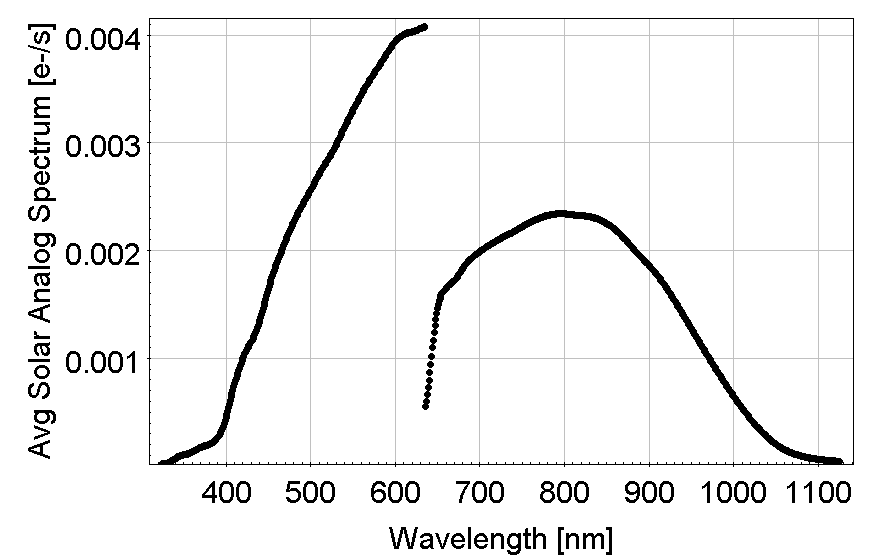Gaia DR3 Solar Analogue Spectrum - Gaia
Gaia DR3 Solar Analogue Spectrum

Average solar analogue spectrum computed. Credit: ESA/Gaia/DPAC, CC BY-SA 3.0 IGO. Acknowledgements: L. Galluccio, M. Delbo, F. De Angeli, P. Tanga, A. Cellino
The reflectance spectra of asteroids published in Gaia DR3 have all been computed through the normalisation of their flux spectra by a unique Reference Solar Spectrum, imposing unit reflectivity for the same at wavelength λref=550 nm. Our Reference Solar Spectrum is derived from an average of calibrated spectra of solar-type stars with negligible reddening, carefully selected to avoid contamination by samples that were suspected to be outliers with respect to the average. The details of the procedure are provided in the article "Gaia DR3: Reflectance spectra of solar system small bodies".
As it is well known that spectral slopes and global features can be sensitive to the specific choice of the solar analogue used for normalisation, we provide in a tabulated form, the Reference Solar Spectrum, so that the users can access their full details. For completeness, the source identifiers of the solar analogue stars that have been chosen to compute the Reference Solar Spectrum, are also provided in this text file.
The Reference Solar Spectrum is affected by the spectral response of the BP/RP instrument, and a strong discontinuity exists at the wavelength chosen for the transition between the two instrument domains of wavelength range.
Download here the full zip file with the Reference Solar Spectrum and readme
Credit: ESA/Gaia/DPAC, L. Galluccio, M. Delbo, F. De Angeli, P. Tanga, A. Cellino
Published 13 June 2022
- Removed a total of (4) style text-align:center;








































 Sign in
Sign in
 Science & Technology
Science & Technology

